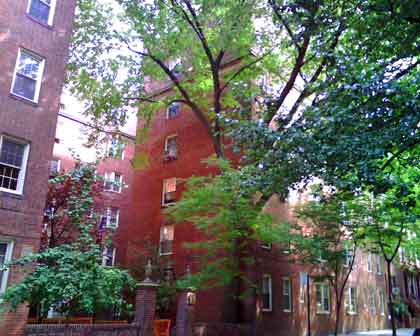
"JE" writes to BHB:
The board of directors at 145 Hicks is trying to take down the huge elm tree in front of the building. This is one of the most venerable and lovely of our trees, is in perfect health, and removing it would be a terrible loss to our neighborhood. lease consider doing a piece about this. Shareholders and residents on the block are in the process of having any removal action stopped.
According to a comment on BHB, the deed is already done:
145 HICKS STREET BOARD VOTES TO CUT DOWN 100 YEAR OLD TREE !
What is wrong with these people? The Majestic Historic Tree between Clark and Pierrepont in the Mansion House courtyard is going to be chopped down courtesy of the Mansion House Board of Directors. This will affect the neighborhood greatly. Does this upset anyone else??????????

Brooklyn Paper's former Heights Lowdown columnist (and still supervixen) Christie Rizk reported on the controversy back in April:
For 10 years, Andrea Demetropoulos-Marcolini has been taking care of her own little part of Heights history — an 80-year-old American Elm tree on Hicks Street that is suddenly facing the ax.
How could that be? Brooklyn Heights is a historically protected neighborhood! Buildings can’t just knock over anything they please, right?
Wrong. Demetropoulos-Marcolini isn’t trying to save isn’t a church or a brownstone — that would be easy. Instead, the American elm in the front garden of 145 Hicks St. could get cut down rather than force the building’s co-op board to reroute a ConEd electrical conduit pipe that the tree’s roots seem to be messing with.
Photo: mscali


